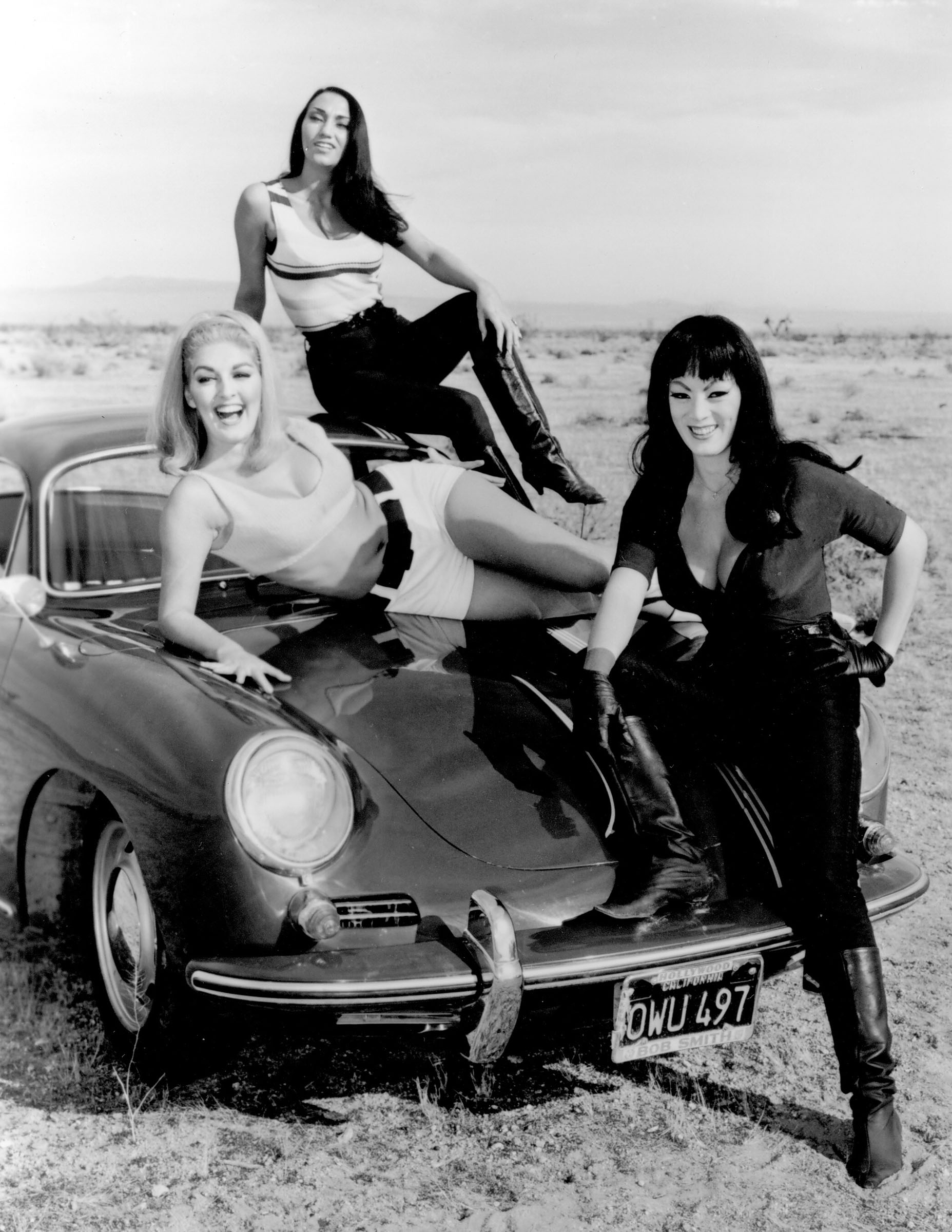Feet are risqué. Ankles are sexy. Legs are too sinful. Can you imagine a conservative audience’s reaction to a Michael Bay movie in the ‘60s? “No Jessabelle, that’s not your boyfriend’s hand in his pocket; he’s just never seen a computer-edited image of his fantasies projected in 4k.”
A lot of things have happened in the 50 years since SFU’s inception. Revisiting Russ Meyer’s Faster, Pussycat! Kill! Kill! (released in 1965) is ridiculously entertaining and, if I dare say it, outright fascinating.
This ‘60s “skin flick,” with very little skin by today’s standards, is groundbreaking in its portrayal of women and gender politics, but it’s also a film with cars, murder, “sex” (no nudity, it’s all suggested), and dialogue that could have been written by Raymond Chandler if he was doing a porn-parody of one of his noirs.
In roles you might see Arnold Schwarzenegger playing twenty years later in films like Conan, Varla, Rosie, and Billie are half busty, amazon princesses, half femme-fatales and wholly a feminist fantasy: powerful, fearless, and merciless. When women lacked agency or prowess in mainstream cinema, these three go-go dancers turned killers on-the-run drove a narrative with pulpy traits and political intents. They embody the frustrations that spawned the second wave of feminism.
The clash between the archetypally passive female characters and the domineering male ones permeate almost every scene. The trio is trying to steal from a rich, misogynistic farmer who desires the women to submit to his sexual fantasies. In a way that’s what makes Faster Pussycat! Kill! Kill! profoundly subversive — the big-breasted, sexy women are clearly objectified by many of Meyer’s compositions, but their agency and violent manipulation of their sexual power are a direct threat to this attitude.
Perhaps even more fascinating is the presence of Linda, the trio’s bikini-wearing kidnap victim that was taken after Varla killed her subtly oppressive boyfriend. Linda is not a feminist figure; she is the kind of weak eye-candy you could see in a typical Hollywood flick during the time of this film’s release.
As the war between genders brews, she gains more and more agency before a final sequence that reunites her with another male figure; but this time, instead of being passive like in her previous relationship, she is influential and brave without Varla’s extremism.
The original audience may have been right at home with the current Michael Bay misogyny, showing the limited progress we have made in the last 50 years, but the depictions of the female body in Bay’s films would probably give Faster Pussycat’s original audience as much control as a teenage boy whose parents have put a parental lock on his internet access.
Except, back then, there was no internet: they had Russ Meyer — a man who cleverly had his scantily clad women and ate them too. The internet has made a lot of things obsolete, including many of Meyer’s films, but as a time capsule, a progressive groundbreaker, and a hell of a good time, Faster, Pussycat! Kill! Kill! is as deadly amazing as ever.

